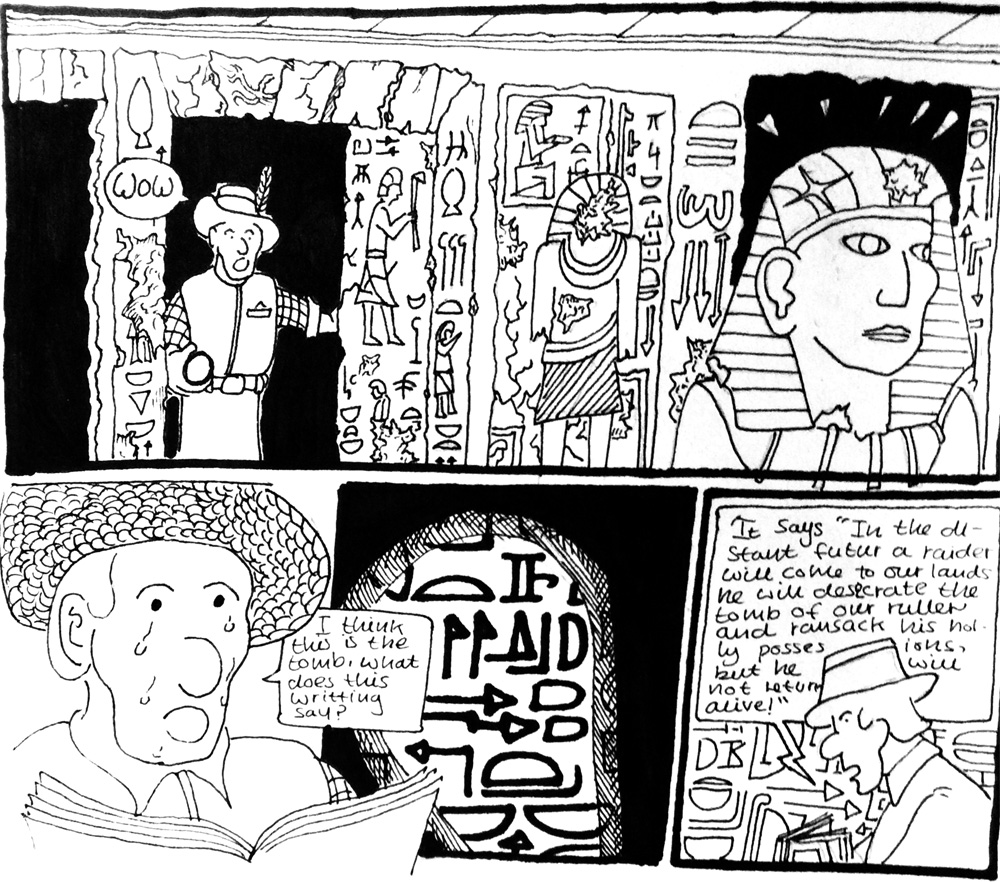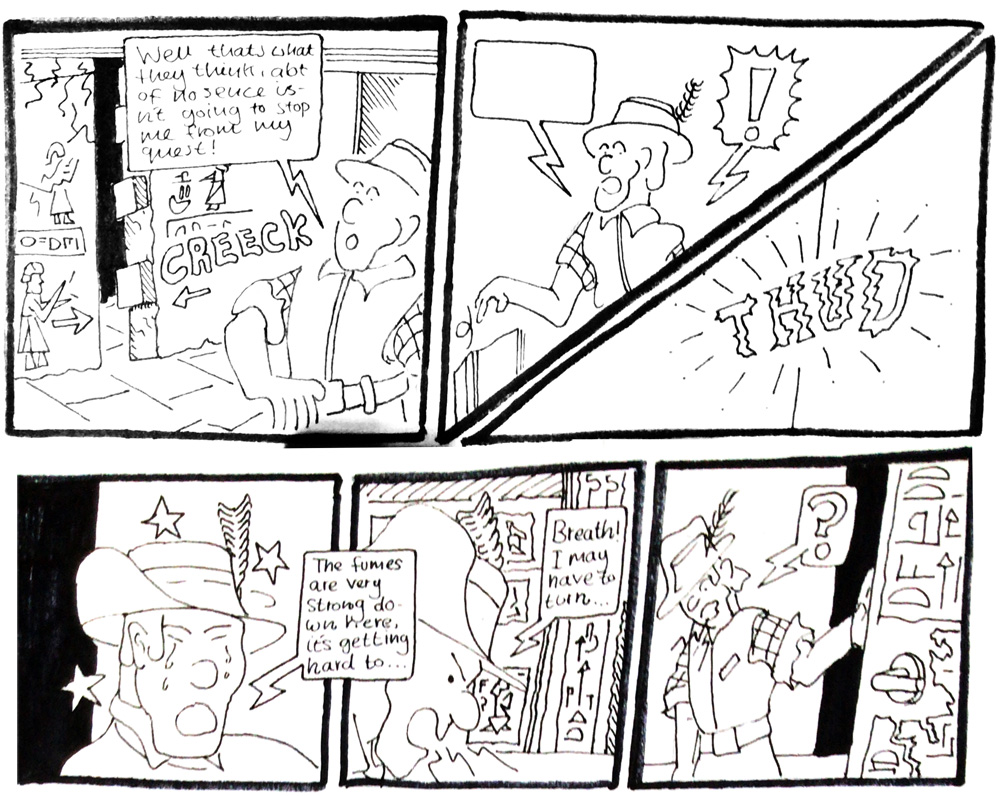By Irina Richards
Irina Richards is a comics artist, illustrator and educator from Cambridgeshire. Irina enjoys telling stories of everyday experiences and challenges through comics; her art is inspired by history, folklore, nature and poetry. In this post, Irina shares her recent project she did with Young Artists, focusing on creating comics inspired by online collections from The Fitzwilliam Museum.
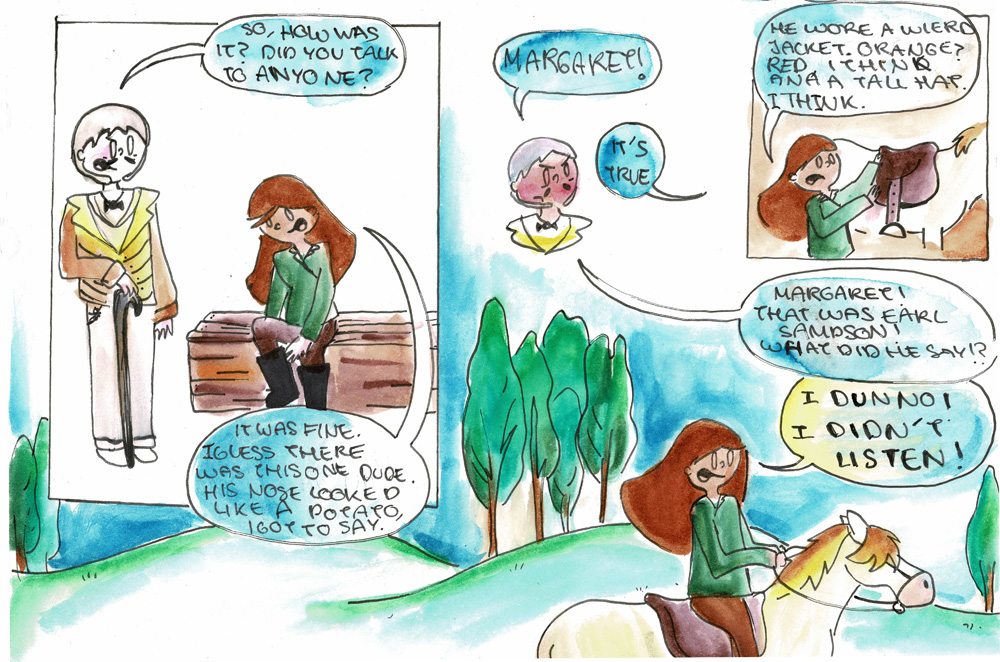
Notes for Teachers
What is the aim of this exercise?
This resource aims to demonstrate how objects from museum collections (including online collections) can be re-interpreted in comics format. This activity can encourage young people to study museum objects and form connections between objects and their own interests and experiences. The resource may provide a link to other subjects, such as Geography and History.
What age can this exercise be used for?
Although this activity was carried out with a group of young people aged between 10 and 19, this resource can be used with children and young people of any age.
How long does this exercise take?
This exercise may take 1-2 hours. Young people may continue creating their comics in their own time; the project can be extended to last several sessions.
How do I measure success?
Success will be measured by the young people’s involvement and an ability to interpret the object through their comics
More able or engaged participants may create more complex visuals and stories that encompass more complex ideas, connecting the objects with the history or culture they come from.
Encourage children to look at the objects and study them closely if they are physical – think about where the object came from and what it was used for. If the children have chosen paintings/drawings, what do they depict? Where are they set? What story can they be part of?
What can we try after this exercise?
Other resources exploring comics, links to history, and activities that link to art in museums.
Which artists might we look at?
Many comics have created work that links to museum and heritage sites, history, and archaeology. You may want to explore the art of John Swogger, Hannah Sackett, and Helen Greetham.
You may also want to see Irina’s other projects, and books she has published with Sweatdrop Studios.
Introduction
Comics are a unique art form; they combine words and images, and allow the artist to tell their own stories from a highly personal perspective. Comics incorporate a wide range of genres and themes; they are not limited to any particular art style, and can be created by artists of all ages and abilities.
As an artist educator, I have had a long and active interest in comics’ uses in education, particularly the way comics can be used in museums, galleries, and heritage settings. I was particularly keen to explore how comics can connect museum collections with contemporary audiences, allowing visitors to construct their own stories inspired by museum items. Comics are being increasingly used in museums and heritage settings to communicate information and/or research around particular items or events – titles by artists such as John Swogger and Hannah Sackett are exciting examples of this.
I am currently in my final year of MA Education (Artist Teacher Practice) at Oxford Brookes University. For my Major Project, I chose to investigate how young people make meanings from objects in museum collections. I was very lucky to recruit a small but very enthusiastic group of young people, including AccessArt Young Artists, to help me with my investigation.
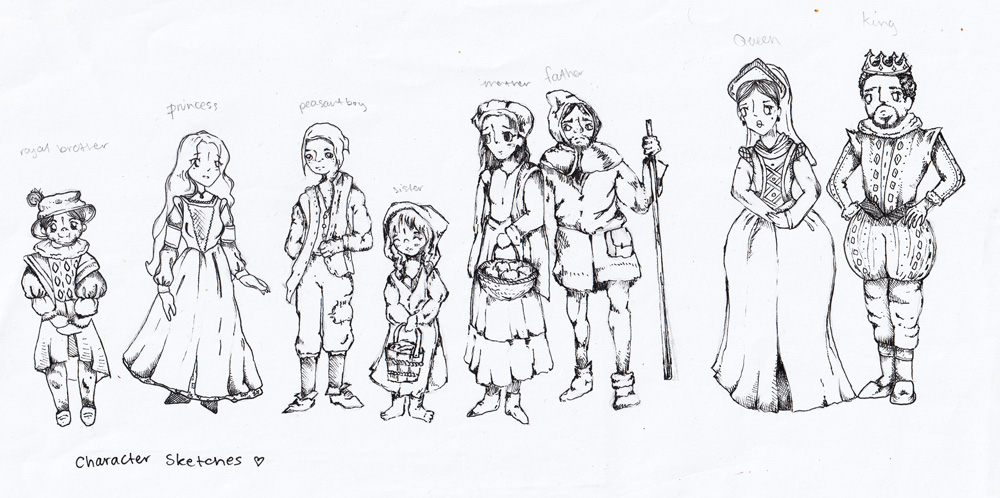 Character designs created by a participant, for a comic inspired by a medieval coin (half siliqua) from The Fitzwilliam Museum’s collections.
Character designs created by a participant, for a comic inspired by a medieval coin (half siliqua) from The Fitzwilliam Museum’s collections.
Project activities
My initial plan focused on a museum visit, where participants would be able to interact and engage with the objects. However, the pandemic restrictions made physical museum visits impossible, and I had to adapt the project for digital delivery. This was made possible with The Fitzwilliam Museum’s kind permission to use their online collections for this project.
I did a bit of my own “digital browsing” around The Fitzwilliam Museum’s online collection prior to starting the project with participants. I was fascinated by the volume and variety of artefacts the museum holds – everything from armour to paintings to teapots! The collection is easy to search and sort, enabling users to select the type of items they are interested in – or filter their results by historical period, particular artist or medium.
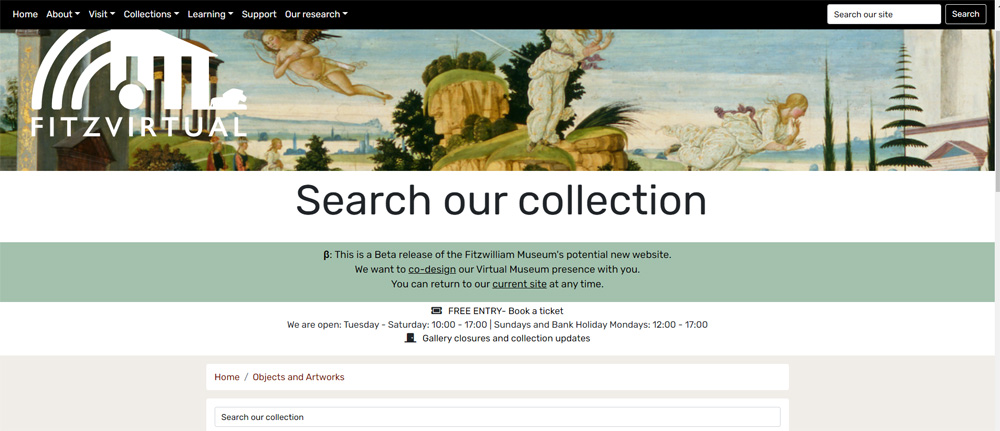 Inspired by the Fitzwilliam Museum’s online collections, I invited Young Artists to participate in an online workshop, held via Zoom. Together with Young Artists, we explored the online collections, and participants selected an interesting variety of objects which they found intriguing or curious.
Inspired by the Fitzwilliam Museum’s online collections, I invited Young Artists to participate in an online workshop, held via Zoom. Together with Young Artists, we explored the online collections, and participants selected an interesting variety of objects which they found intriguing or curious.
I then shared some of my own comics that I created as part of my current research, inspired and informed by museum items. The aim of this was not to provide an “exemplar” of how comics “should” be done, but to share a part of my own creative journey with Young Artists, in the hope that my experience may encourage them in their own comics creation.
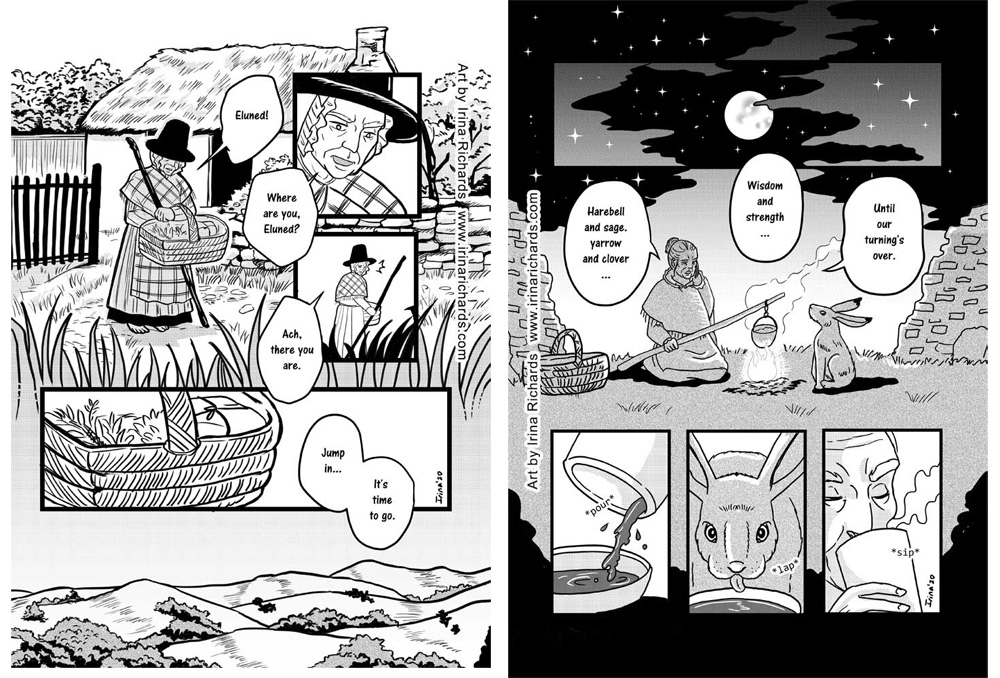 I also talked about the basic principles and processes of creating comics, before asking each Young Artist to create their own comics to respond to the object they chose. There was no time limit on the activity, and participants were encouraged to continue creating in their own time.
I also talked about the basic principles and processes of creating comics, before asking each Young Artist to create their own comics to respond to the object they chose. There was no time limit on the activity, and participants were encouraged to continue creating in their own time.
The following week, I met some of the Young Artists for a drop-in workshop, as an opportunity to “touch base”, share artwork and continue a discussion about creating comics.
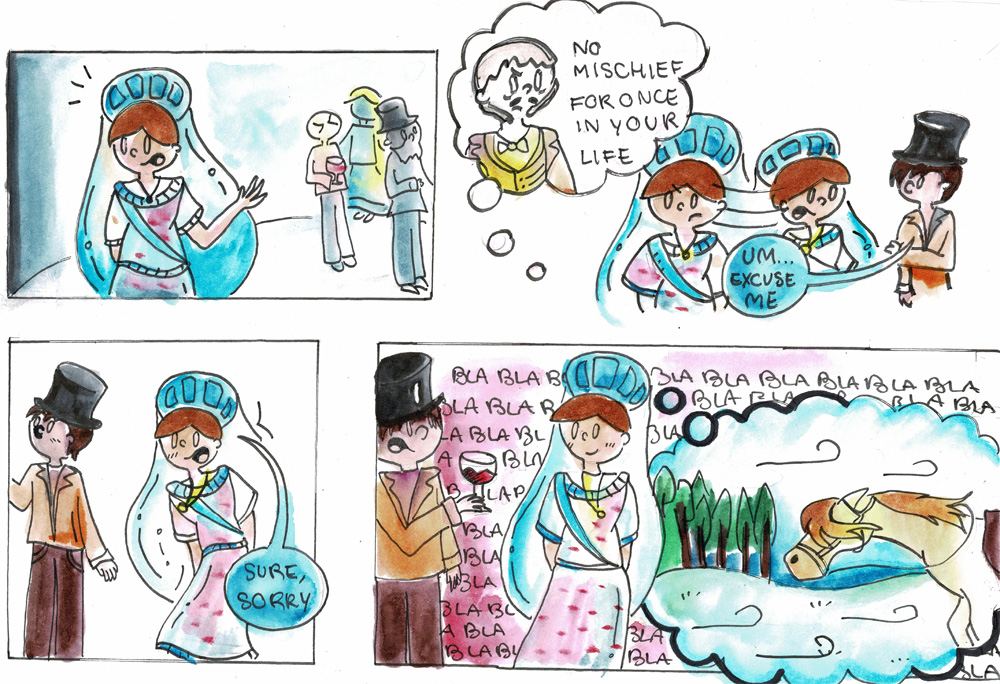
 A participant’s comic, inspired by a Victorian figurine from The Fitzwilliam Museum’s collections.
A participant’s comic, inspired by a Victorian figurine from The Fitzwilliam Museum’s collections.
Activity outcomes and feedback
I was aware that whilst some of the Young Artists were completely new to drawing comics, others have produced their own comics before, and were well-versed in this exciting visual medium. Regardless of their previous experience, Young Artists showed a good understanding of comics creation, incorporating their chosen objects into their visual stories. Each Young Artist’s individuality and flair for art was evident in their comics.
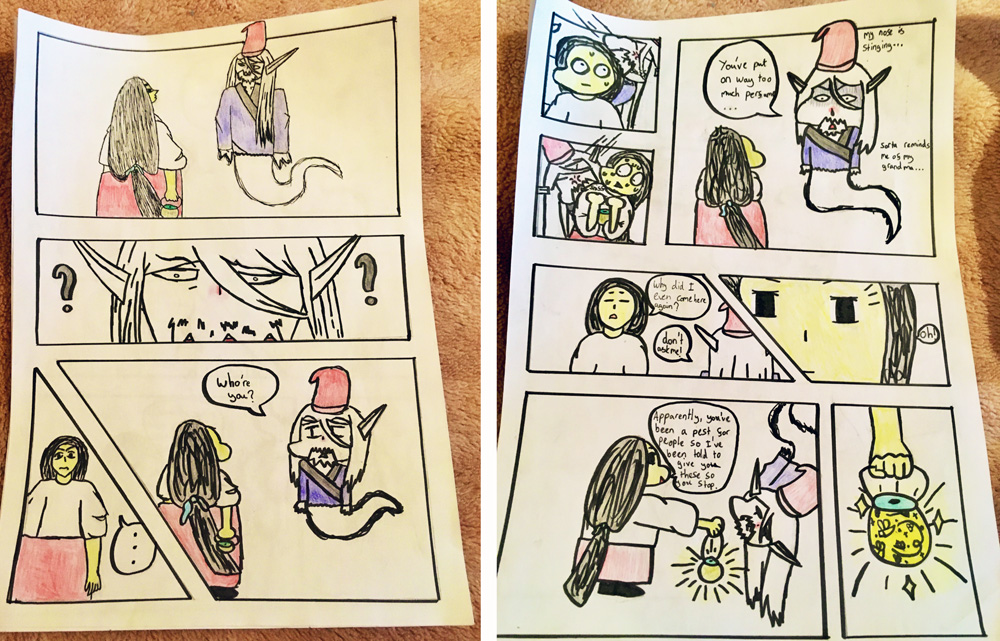 A participant’s comic, inspired by “Mount Yoshino midnight-moon” print from The Fitzwilliam Museum’s collections.
A participant’s comic, inspired by “Mount Yoshino midnight-moon” print from The Fitzwilliam Museum’s collections.
At the end of the project, I asked the young people to complete a questionnaire to reflect on their experiences of the project. The feedback was overwhelmingly positive. Despite the fact that none of the Young Artists have used online museum collections before (and one respondent said they did not like visiting museums!), they found the project enjoyable. Participants were able to choose items that could be re-imagined in a story, and comics were named as an appropriate art form for creating their stories. Among the highlights of the activity, Young Artists named: inspiration to create new artwork, trying out a new artistic medium, learning more about comics creation as well as a new experience of using online museum collections.
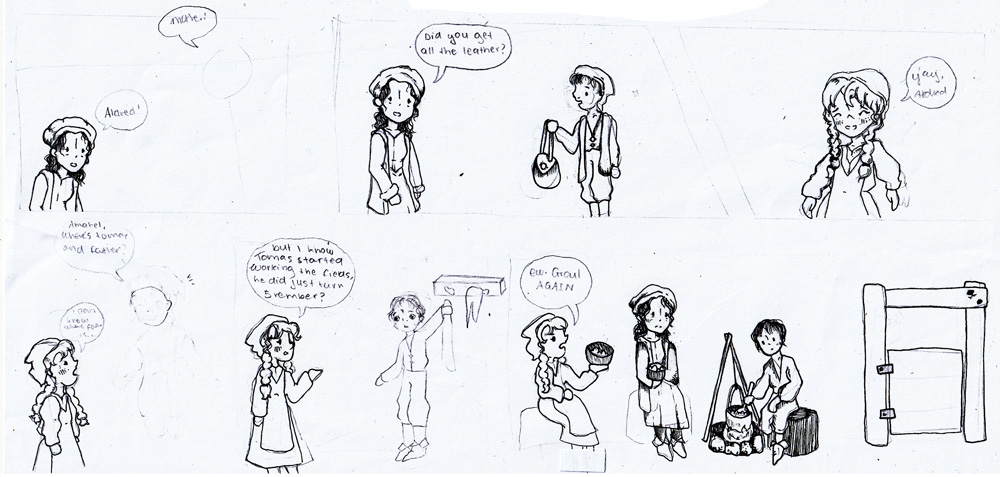
 A participant’s comic, inspired by a medieval coin (half siliqua) from The Fitzwilliam Museum’s collections.
A participant’s comic, inspired by a medieval coin (half siliqua) from The Fitzwilliam Museum’s collections.
Here are some of the Young Artists’ comments about the activity:
“I really enjoyed the class!!!! I haven’t made a comic in a long time and this has made me want to start again. Thanks a lot.”
“Comics and graphic novels are becoming more and more popular as a means of expression, like anime or manga style books. I liked the imagination and creativity aspect of doing it in comic form.”
“I am not used to this art style, I normally draw more realistic and I REALLY enjoyed being able to branch off into a new style and discover the magic of comics!”
“I really enjoyed it and made me vary my art skills.”
“I didn’t find lots of difficulties as I have made comics before, but it did take me a while to come up with an idea.”
